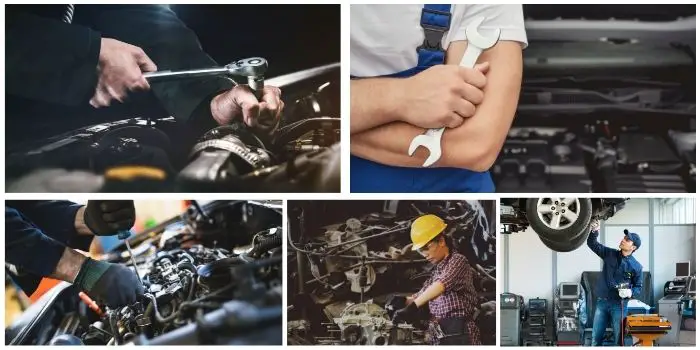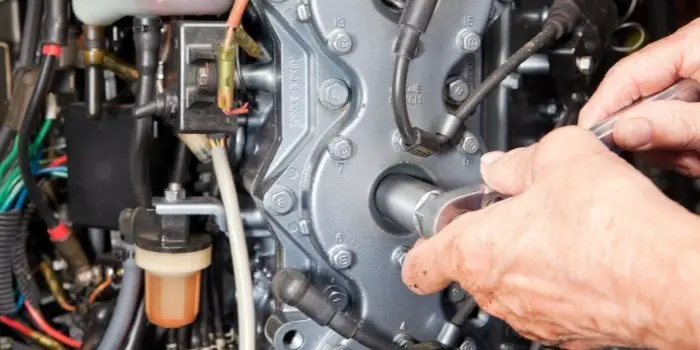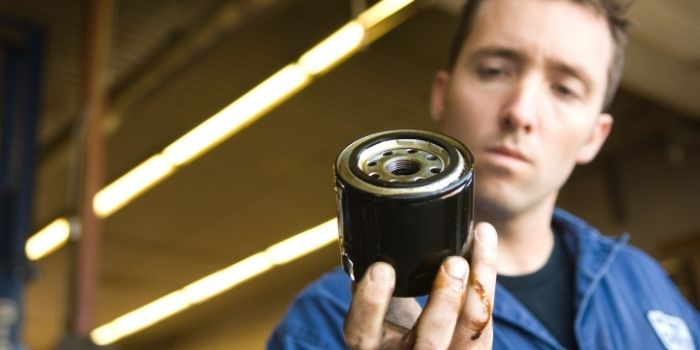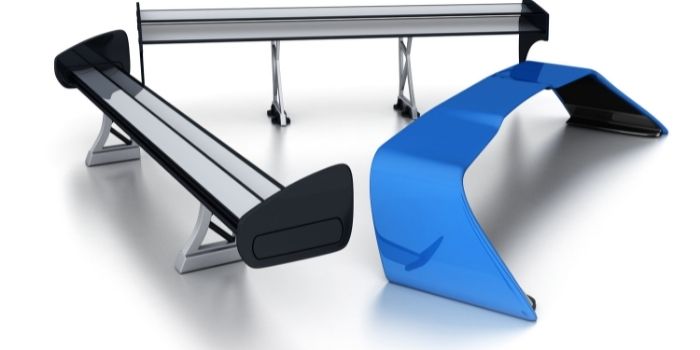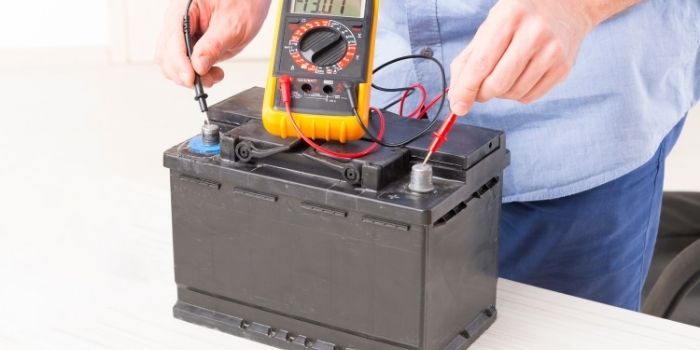
When it comes to batteries for your car, there are two main types: a dry cell and a wet cell. Both types serve the same purpose: to start your engine and keep your electronics running.
But which one is the better option for your vehicle?
There are pros and cons to both dry and wet cell batteries when it comes to powering your car. They differ significantly in design, performance, maintenance, and longevity.
Here’s a look at the differences between these two types of batteries and how they can impact your driving experience.
What is a Dry Battery?
Dry batteries (also called AGM batteries or sealed lead acid batteries) are maintenance-free batteries used in vehicles.
They are sealed, so you can’t add water to them, they don’t require any maintenance i.e. you can simply install and forget about them.
Pros
The main advantage of dry batteries is that they’re very low-maintenance.
You don’t have to add water or check the level, and there’s no risk of leakage or battery acid damage.
This makes them a good choice for people who don’t have time to take care of their car batteries regularly.
Cons
However, dry batteries do have some drawbacks as well. They generally have a lower capacity so they may not be able to power your car for as long.
They also tend to be more expensive, so you’ll need to weigh up the cost before making a decision.
What is a Wet Cell Car Battery?
Wet cell batteries (also called lead-acid batteries or flooded batteries) are the traditional type of battery, and they’re the most common type used in cars these days.
They have removable caps so you can add water or check the level, and they require regular maintenance to keep them running efficiently.
Pros
The main advantage of wet cell batteries is that they tend to have a higher capacity, meaning they can last longer and provide more power for your car.
They’re also generally cheaper, making them a more cost-effective option for many drivers.
Cons
However, wet cell batteries do have some drawbacks.
They can be more prone to leakage and damage from battery acid, so they require regular maintenance to keep them running properly.
They can also emit gases from the electrolyte which can be harmful if inhaled.
This also makes them a less ideal choice for people who don’t have time to take care of their car regularly.
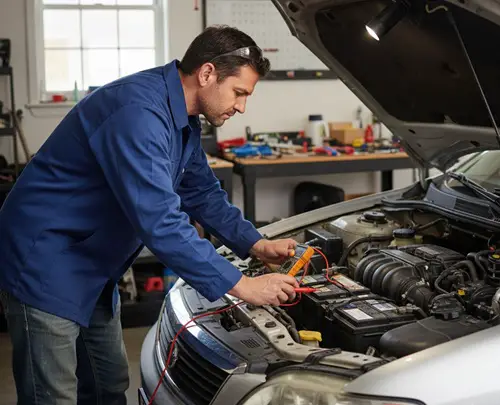
What’s the Difference Between Dry and Wet Batteries?
The key difference between dry and wet cell batteries is in their construction.
Dry cells are sealed, maintenance-free units that are generally less expensive and easier to use than wet cells.
Whereas wet cells have removable caps so you can add water or check the level, and they require regular upkeep to keep them running well.
When comparing both, dry batteries are the most common type, and they’re typically used in small devices like flashlights and remote control cars.
Wet batteries are larger and more powerful, making them ideal for applications like car starters and power tools.
Dry batteries are convenient because they’re easy to store and don’t require any maintenance.
However, they tend to be less powerful than wet batteries, so they may not be suitable for high-drain devices and cars.
Additionally, dry batteries can leak if they’re damaged, which can cause corrosion and other problems.
Wet batteries are more expensive than dry batteries, but they offer a number of benefits. They’re much more powerful, so they’re perfect for high-drain devices.
Additionally, wet batteries are easier to recharge, so you won’t have to replace them as often.
The main downside of wet batteries is that they require regular maintenance, such as adding water to the cells.
When it comes to charging wet cell batteries vs. dry cell batteries, the process and maintenance requirements differ significantly.
For wet (flooded) batteries, you need to check and top up the electrolyte levels with distilled water before charging, as this ensures the battery functions efficiently and prevents damage.
Once the levels are correct, connect the battery to a compatible charger in a well-ventilated area, since wet batteries can release small amounts of gas during charging.
Does the dry battery need charging?
Yes, a dry battery does need charging, but not as often as a wet (flooded) battery.
Dry batteries — like AGM or Gel types — are maintenance-free and hold their charge longer because the electrolyte is sealed and doesn’t evaporate. However, they can still lose charge over time or after long periods of disuse.
So while they don’t need frequent charging, it’s good to recharge them periodically to maintain performance and extend lifespan — especially if the vehicle isn’t used regularly.
Cold climate battery choices: wet or dry?
Yes, you can use a wet (flooded) battery in cold temperatures, but it’s not always ideal.
Here’s why:
- Wet batteries contain liquid electrolyte, which can thicken or even freeze if the battery isn’t fully charged, reducing its ability to deliver power.
- Cold weather also slows chemical reactions inside the battery, so a weak or partially charged wet battery may fail to start your car in freezing conditions.
Dry (sealed) batteries, like AGM or Gel types, perform better in cold temperatures because their electrolyte is immobilized, making them more resistant to freezing and able to deliver higher cranking power in winter.
So, if you live in a cold climate, a dry/AGM battery is generally a better choice for reliability and performance. Wet batteries are fine in mild climates, but require extra care in freezing weather.
| Feature / Aspect | Wet (Flooded) Battery | Dry (Sealed) Battery (AGM/Gel) |
|---|---|---|
| Electrolyte Type | Liquid electrolyte (free-flowing) | Absorbed or gelled electrolyte |
| Maintenance | Requires regular water topping | Maintenance-free |
| Venting | Can release gas during charging | Spill-proof, minimal venting |
| Cold Weather Performance | Can freeze if not fully charged | Performs better in freezing temps |
| Lifespan | Long if properly maintained (years) | Slightly shorter but more convenient |
| Durability | Sensitive to vibration & spillage | More vibration-resistant |
| Cost | Generally cheaper | Slightly more expensive |
| Ideal Use | Mild climates, routine maintenance | Extreme climates, high-demand cars, low-maintenance preference |
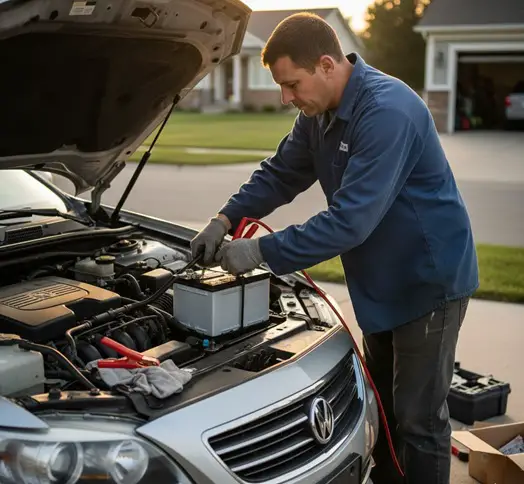
How Do You Tell if a Car Battery Is Sealed or a Flooded Type?
You can easily tell whether a car battery is sealed or flooded by looking at its design and a few key details on the label.
Here’s how to check:
1. Look at the Top of the Battery
Removable caps present – If you see removable vent caps (usually two or six small caps on top), it’s a flooded or wet-cell battery. These allow you to top up distilled water when the electrolyte level drops.
Completely flat, no caps – If the top is smooth and fully sealed, it’s a sealed battery — commonly called maintenance-free, AGM (Absorbent Glass Mat), or Gel type.
2. Check the Label
Manufacturers usually print the type on the label. Look for words like:
- “Flooded,” “Wet Cell,” “Serviceable” → Flooded battery
- “Sealed,” “Maintenance-Free,” “AGM,” or “Gel” → Sealed battery
3. Behavior in Use
Flooded batteries may vent small amounts of gas during charging and require periodic water refilling.
Sealed batteries are spill-proof, don’t need refilling, and are better suited for vehicles with higher electrical demands or vibration exposure.
Pro Maintenance Tips for a Longer Lifespan of Your Car Batteries
A car battery is one of the most critical components of your vehicle, and proper care can significantly extend its lifespan.
Whether you use a wet (flooded) battery or a dry (sealed) battery, following these professional maintenance tips can help you get the most out of your investment.
1- Keep It Clean and Dry
Dirt, grease, and moisture on the battery terminals can cause corrosion and reduce performance.
Clean the terminals regularly using a mixture of baking soda and water, and apply a thin layer of petroleum jelly or terminal protectant to prevent corrosion.
Ensure the battery surface stays dry, especially after rain or washing the car.
2- Check Electrolyte Levels (for Wet Batteries)
For flooded batteries, it’s essential to check the electrolyte levels periodically. Top up with distilled water only when levels are low, avoiding overfilling.
Proper electrolyte levels ensure efficient chemical reactions and prevent damage to the plates. Dry batteries do not require this, but wet batteries depend on it for longevity.
3- Avoid Deep Discharges
Frequent deep discharges, where the battery is drained almost completely, can shorten its life.
Try to start your car regularly, even if it’s not in daily use, and consider a battery maintainer or trickle charger for vehicles that sit idle for long periods.
4- Secure the Battery Properly
A loosely mounted battery can vibrate excessively, damaging internal components over time.
Make sure the battery is firmly secured in its tray, and check mounts periodically for wear or looseness.
5- Monitor Charging and Electrical Load
Ensure your charging system is functioning correctly; overcharging or undercharging can damage the battery.
Avoid leaving lights, infotainment systems, or accessories on when the engine is off, as this can slowly drain the battery and reduce its lifespan.
By following these simple yet effective steps, you can maximize your battery’s performance and reliability, whether you drive a daily commuter or a high-performance vehicle.
With proper care, a car battery can last well beyond the average 3–5 years, saving you both time and money.
Conclusion
There are many things to take into account when deciding which type of car battery is best for your needs.
Two of the most important factors are whether you want a dry or wet cell battery. It really depends on your individual needs and preferences.
If you’re looking for a low-maintenance option, then a dry cell battery may be the best choice. However, if you need a powerful battery that will last longer, then a wet cell battery may be a better option.
Ultimately, it’s up to you to decide which type of battery is best for your car.

Based in Orem (Utah) John Paterson graduated from Utah Valley University and has begun writing in 2009. He has a large wealth of experience in writing articles related to cars, automotive repair, wheels, cleaning/maintenance, and much more. He has also written instructional articles in a similar niche for a few online publications as well. Currently, he works as a mechanic in his personal garage shop where he loves serving his countrymen from his heart.

